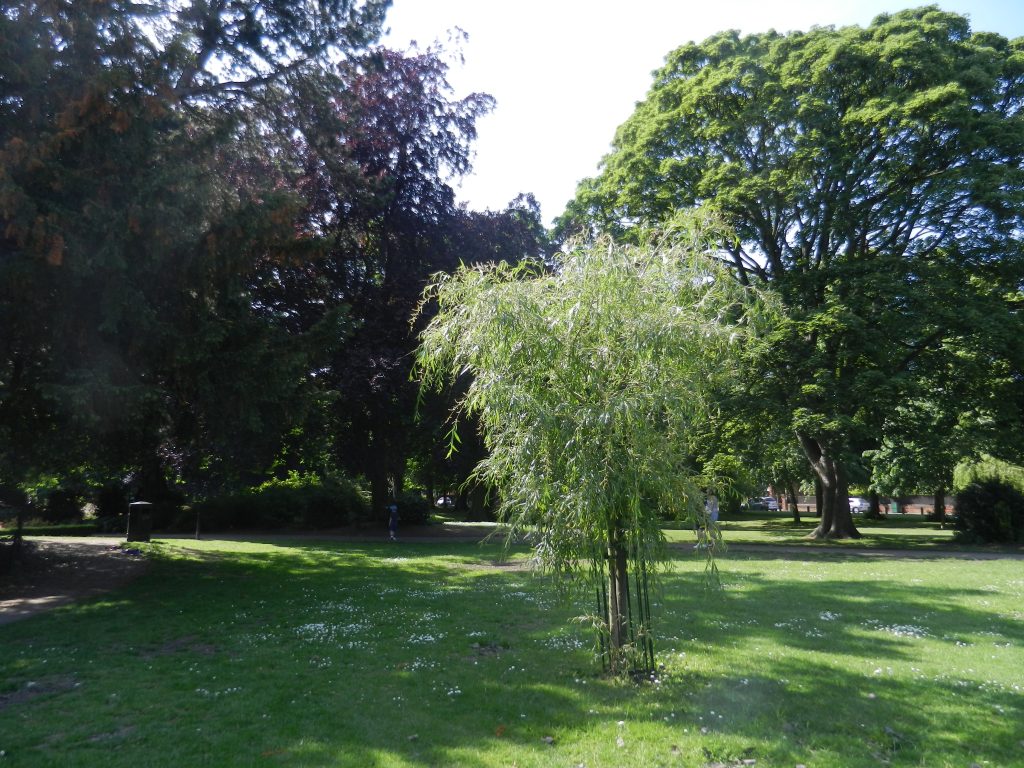
Firstly, just a hangover from the last blog – St. James’ church, Grimsby and Holy Trinity, Hull are both now classified as minster churches, however, St. James actually was a medieval ‘minster’ church. Another comparison is that old Grimsby once had two parish churches but St. Mary’s fell into disrepair and was demolished, in Hull the two medieval parish churches (although technically neither were until the 1660s) survive. Yet another comparison is that St. James’ experienced/suffered from a more thorough Gothic Revival restoration than Holy Trinity and suffered some considerable bomb damage during the Second World War, unlike Holy Trinity which, like St. Paul’s, London, was spared. Incidentally Holy Trinity did sort-of receive a direct hit in the First World War when a bomb dropped from an enemy zeppelin caused damage to the south-east corner of the churchyard perimeter wall.
The photo above shows a small section People’s Park, Grimsby with a glimpse of the Victorian and Edwardian houses around the Park in the distance. The idea of allocating the edge of a proposed municipal park to high class housing had been pioneered at Richmond Park, one of London’s Royal Parks. The benefit accruing from this policy was that the sale of the land recouped some of the costs incurred when creating the Park, and not just any housing but high-class housing, often detached and architect designed to give status to the Park. Of course, the same policy was followed in the setting-up of Pearson Park in the 1860s, although some plots remained unsold for some decades (the Friends of Pearson Park have printed early details of these houses in their last two Newsletters, this information first published in Hull Civic Society’s Newsletter – this information compiled from the research of Geoff. Percival). There were initially plans for housing to be allocated along the west side of West Park, Hull and part the perimeter of East Park, Hull when both were being planned in the 1880s, but there it didn’t happen.
(to be continued)